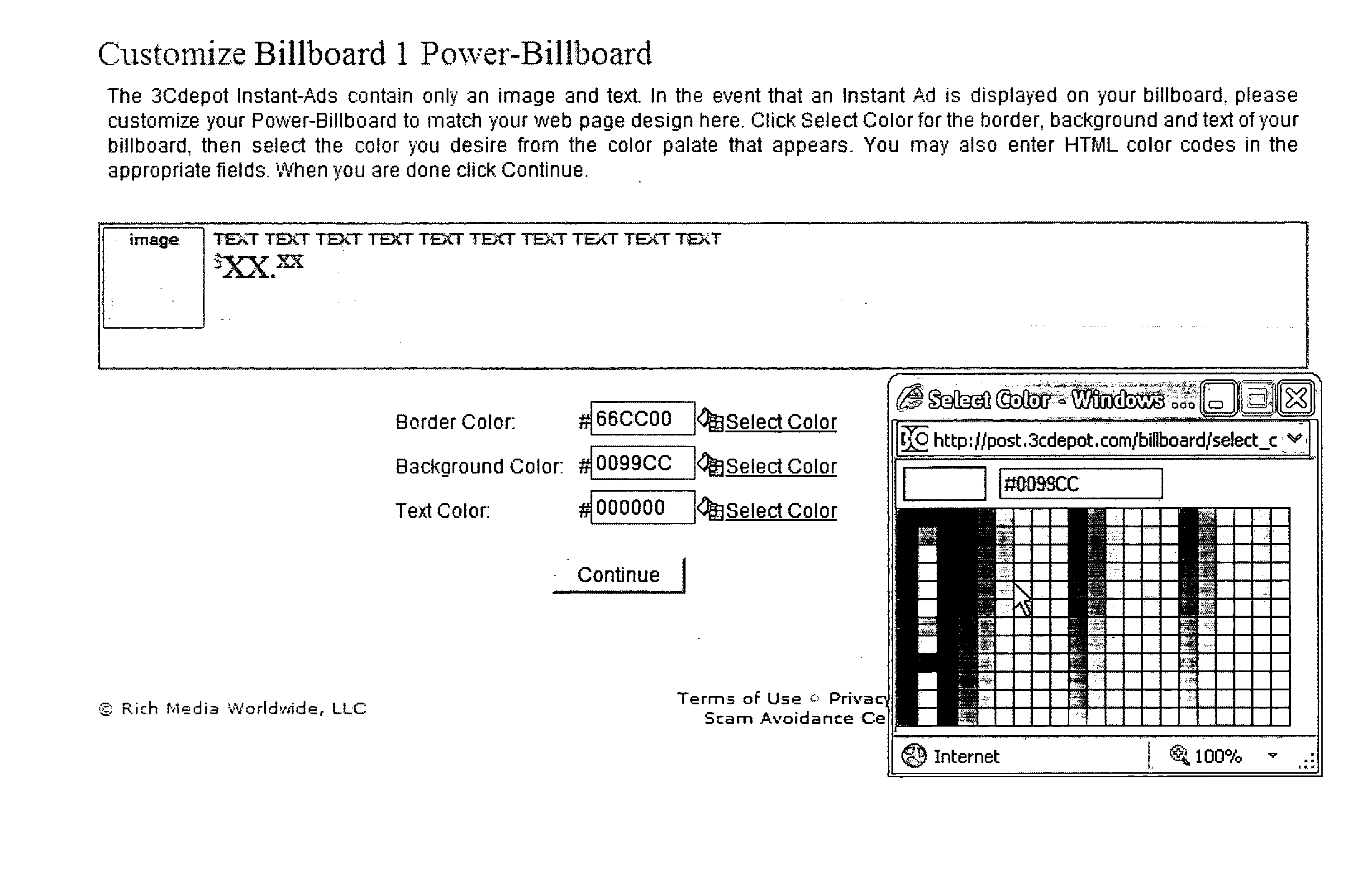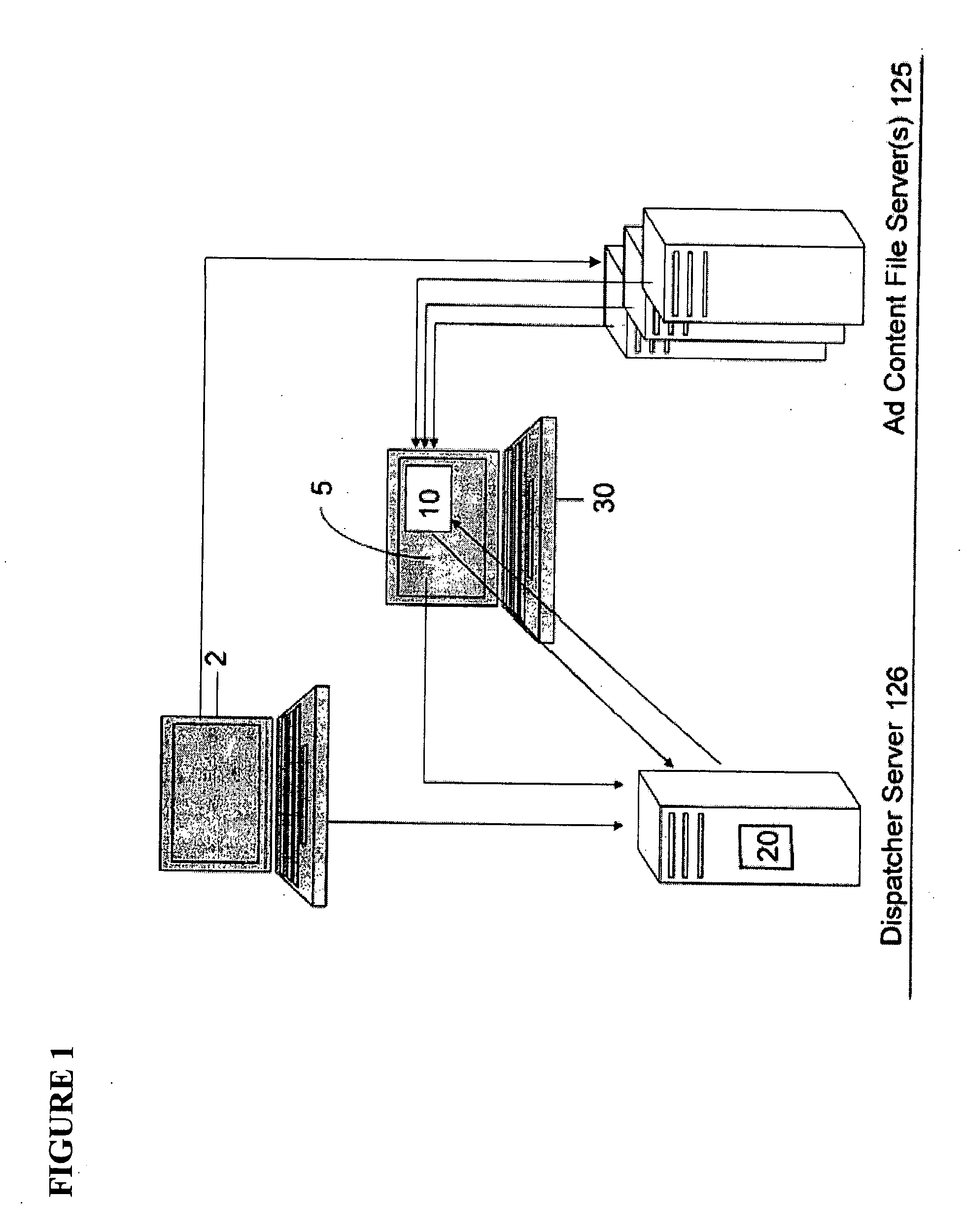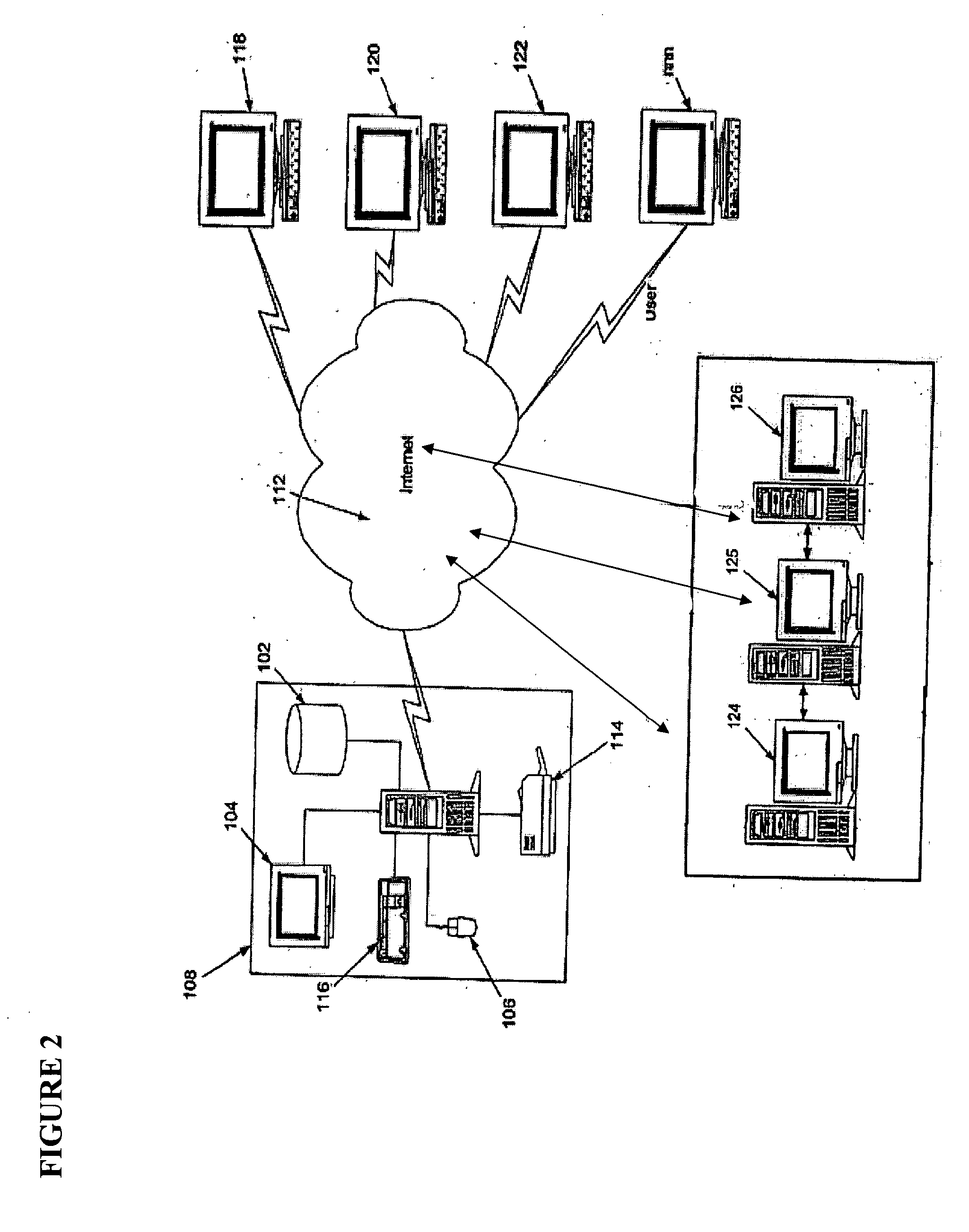[0013] The present invention is a
system and method for creating electronic advertisements using licensed
digital content, and distributing such advertisements for display at desired network locations, including on multiple networks (such as, without limitation, computer networks such as
the Internet as well as cellular,
wireless, cable,
satellite and other networks), whereby the ad to be displayed at a particular network location is selected from a group of ads that reference the same keyword or category and network location via an auction when the display location is acted upon by a network user / ad viewer. The
digital content is delivered to designated advertising locations on the network and becomes part of an advertising display composed at the time requested by the network user / ad viewer by using a
relational database for storing data required for commands that execute retrieval,
assembly and dispatching of the licensed
digital content files previously stored in one or more servers, as well as messaging, tracking, display, and billing for both use of the licensed content and display of the ad at the designated location on a cost-per-use basis. Third parties that make their digital content available for licensing and the publishers that display the advertisements on their network locations are automatically paid via the
system each time an ad is displayed using their content and ad space, respectively. Ad publishers can participate in a barter-based ad
exchange network wherein ad publishers can exchange advertising impressions / views in their publication (whether online or other) for impressions / views of their advertisements via the network. The system and method provides the ability for both publishers and advertisers to optimize the benefits of creating and distributing advertisements electronically, and manage and track every aspect of the advertisement creation and distribution process.
[0014] The present invention provides ad publishers with the ability to automatically accept placement of advertising at their network locations by providing a display space module, or “billboard module” that can be easily embedded at the network location where the ad will be displayed, such as, for example, on the ad publisher's
web page(s) or, installed in cellular phone or a variety of other network devices that
display advertising. This “billboard module” is associated with categories or keywords and communicates with a central dispatcher
server that selects advertising and provides instructions to render the advertising in the module.
[0021] As noted previously, the present invention, in a preferred embodiment, uses FSDC technology to process ad viewer
activity tracking data. This allows the system to send a tracking string with information (variables) received from the dispatcher
server by the ad file directly to a tracking
server. In a preferred embodiment, the tracking functions of the present invention are performed in a more efficient manner than prior art systems. Instead of redirecting a website user's request as discussed above, when a network user views an advertisement using the present invention and in response clicks or requests a URL or other location address from the information provided, the network user is taken directly to the URL or other location of interest, while a
query string is independently sent to the system's tracking server from the ad file. The performance of the tracking server is not apparent to the network user and cannot affect the user. The
tracking data is more accurate and can represent several different customizable parameters sent from the destination file viewed rather than merely counting the number of requests. Furthermore, the use of independent connection processes insures that the network user'
s system and privacy is not further exposed to the
tracking system. Within the context of
server side data sharing, the present invention provides fast and efficient, predominantly one-way communication, without requiring storage of any files on a network user's computer system. The system, by utilizing FSDC for tracking, directly establishes network connections between the ad file and the dispatcher
server system where the tracking parameters and click-through destinations for advertisements are stored in the dispatcher server
database by means of a single compiled file that does not require an additional network
communications system such as a
web browser or other supporting application. Specifically, a
network connection is established to an encoded URL or other location address, and information is delivered to the tracking server in the form of a
query string. Differing from a typical browser, or other typical network enabling
software systems, the
communication link established by the compiled file is predominantly one way and non-conversational.
Impact on system resources is reduced as overhead support
software is not required. Likewise bandwidth is conserved and issues of privacy are maintained as minimal information is exchanged without network user interaction or storage of files on the user's
computer memory.
[0022] The present invention improves over prior advertising systems and methods in many ways. The present invention does not embed advertising
HTML files within a
web page, providing considerable economies to advertisers in saved labor, time and cost in terms of both inserting advertisements into
web page files, and later changing any of those advertisements. The present invention functions totally transparently to a network user and which neither inconveniences nor burdens the user. The present invention does not require a network user to download or install on the user's computer a separate application program specifically to receive advertising or perform any affirmative act other than normal browsing to receive such advertising. The present invention also provides proper accounting to an advertiser, content licensor and ad publisher by accurately and validly ascertaining and tracking user click-throughs / impressions of fully rendered advertisements. The present invention also allows ad publishers to maximize the revenues an increase effectiveness they receive from running
third party ads, by being able to select for display (via the auction) the most profitable ads due to cost-per-click and click-through rate statistics. The present invention allows advertisers to more accurately target their advertising on
search engine websites by separating the advertising auction process from the
search engine process, allowing for second generation relevancy. The present invention allows for optimization of advertising campaigns by allowing for real-time auctions for available advertising spots, taking into account the amount of available advertising spots at the time of the action, optimizing the value of the advertising spot at the time it is requested, and by allowing for the
assembly of advertising
on the fly for display on the network, and the ability to
license quality digital media creative files on a cost effective cost-per-use basis, and update campaign parameter and creative according to campaign results derived in real time by FSDC tracking.
[0023] Additionally, for those advertisers that do not have an e-commerce website, the system allows them to create their own online e-commerce catalog and connect their product or catalog of products to their advertising. Users can then, when viewing the advertisement, access and review the product / catalog information and select items for purchase. The system provides the online e-commerce functionality to allow users to purchase and pay for the advertiser's products online, which is a valuable feature for those that do not have their own e-commerce capability, and provides a
turnkey advertising and e-commerce system for users, providing them with the ability to create professional looking large display ads which are more effective in an easy and cost-efficient way.
 Login to View More
Login to View More  Login to View More
Login to View More 


